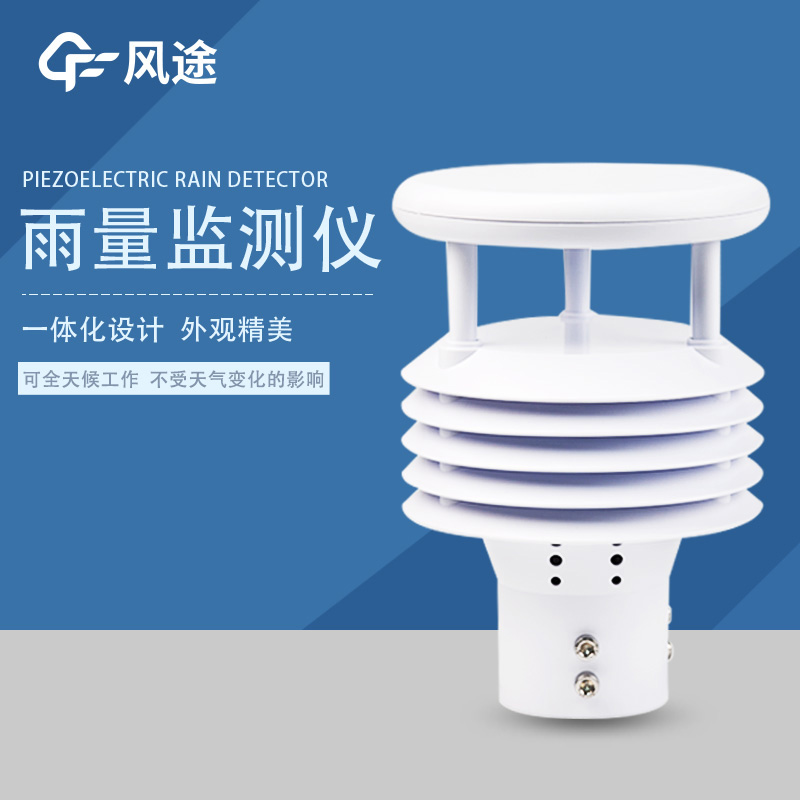Shandong Fengtu IOT Technology Co., Ltd
Sales Manager:Ms. Emily Wang
Cel,Whatsapp,Wechat:+86 15898932201
Email:info@fengtutec.com
Add:No. 155 Optoelectronic Industry Accelerator, Gaoxin District, Weifang, Shandong, China

Sales Manager:Ms. Emily Wang
Cel,Whatsapp,Wechat:+86 15898932201
Email:info@fengtutec.com
Add:No. 155 Optoelectronic Industry Accelerator, Gaoxin District, Weifang, Shandong, China
time:2025-07-08 09:21:22 source:Weather Station viewed:141 time
A rain gauge is an important device used to measure precipitation. With the continuous advancement of science and technology, the types of rain gauges have become increasingly diverse, among which the piezoelectric rain gauge has emerged as a "new favorite" in the market in recent years. Below, I will take Fengtu's rain gauge products as an example to compare the differences between piezoelectric rain gauges and other common rain gauges.
Comparison with Tipping Bucket Rain Gauges
The tipping bucket rain gauge is the most classic rain measurement device. It collects rainwater through an inclined funnel. When a certain amount of rainwater enters the funnel, the funnel tilts and dumps the water inside. At this time, the sensor detects this action, thereby recording a rainfall event. Fengtu's tipping bucket rain gauge has a maximum rainfall intensity measurement range of 4mm/min, an operating temperature generally between 0~50℃, and a measurement accuracy of ≤±3%.
This type of rain gauge has some drawbacks. Due to its mechanical structure, the flipping of the tipping bucket is prone to be affected by the friction of the rotating shaft, water or sediment sticking to the funnel, insects, etc., leading to measurement errors. During heavy rain, the inertia of the tipping bucket makes it unable to flip in time, resulting in the loss of rainwater and distorted data. Moreover, tipping bucket rain gauges require manual maintenance and have high requirements for the installation environment.
In contrast, Fengtu's piezoelectric rain gauge adopts piezoelectric ceramic kinetic rain monitoring technology, which identifies rainfall based on the force of raindrop impact. Its effective piezoelectric panel size is larger than φ200mm, and it can measure a maximum rainfall intensity of 8mm/min, which is twice the range of traditional rain gauges. The piezoelectric rain gauge can accurately monitor the duration of rainfall down to the second, and can also estimate the maximum impact on the ground and the diameter of raindrops, which the tipping bucket rain gauge cannot do. It integrates all components into a single housing with no exposed parts, eliminating the impact of debris such as leaves, dust, and insects on data accuracy. It also does not require on-site manual cleaning, is simple and quick to install, and has no special requirements for the installation environment.

In the natural ecological system, forests and wetlands are the main sources of negative (oxygen) ions in the air. The negative oxygen ion concentration in these areas plays an important role in improving air quality, regulating the local climate, and assessing urban air quality. Long - term exposure...
Yangmei, a characteristic fruit in southern China, is highly favored by consumers for its sweet and sour taste, as well as its rich medicinal and edible values. As a perennial plant, its growth is influenced by the comprehensive effects of the current year's climate, the previous year's envi...
As industrialization speeds up and cities expand, air quality has become a growing concern. Traditional fixed - station air quality monitoring offers precise data but has drawbacks like high costs, limited monitoring areas, and inability to collect continuous spatiotemporal data. Mobile air quality...
The Clairvoyance water and rain query system is based on the Internet of Things technology, and realizes the function of water resources monitoring and early warning through the processing and analysis of the data acquisition module. The system conducts comprehensive management and data analysis of...